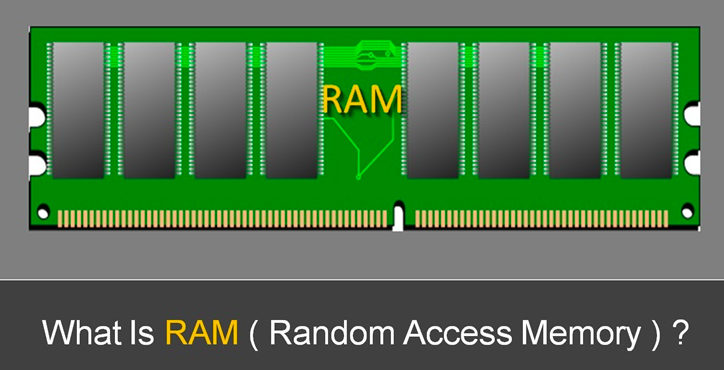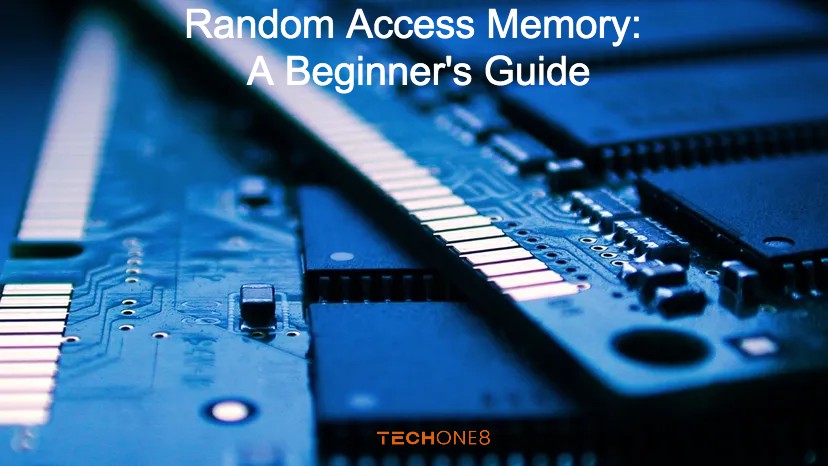Contents
Random Access Memory Foundational Data
Random-access memory (RAM) is an abbreviation for random-access memory. It is one of the most crucial parts of your computer. A random-access memory device will allow data items to be read or written in about the same amount of time, regardless of where the data is physically located inside the memory.
It can read and write at any moment, and its reading and writing speed is rapid. It is typically employed as a temporary data storage media for executing operating systems or other programmes.
RAM, in a nutshell, is intended to enable quick read and write access to storage devices. Your computer uses Random Access Memory to load data because it runs data considerably faster than a hard disc. Without it, accomplishing almost anything on any system would be much slower, if not impossible.

Random Access Memory can be compared to an office desk metaphorically. Desktop computers are used to swiftly access crucial documents, writing tools, and other objects required for work at the time. If you don’t have a desk, you can store things in drawers and filing cabinets. Still, it will take you longer to perform your daily activities because you will have to frequently enter these storage compartments to acquire what you need and then spend extra time returning it.
Random Access Memory’s Characteristics
Access at random
Random access indicates that the time required to read or write a message in memory is independent of the location of the information. RAM may be used for the next job at any time, making it ideal for handling a massive number of high-speed tasks that the system throws at it.
Volatile
RAM is typically a volatile form of memory. The disadvantage of this type of memory is that recorded data is lost when the power is turned off. If you must save data, you must do so on a long-term storage device (such as a hard disk).
The most significant distinction between RAM and ROM is that Random Access Memory data will immediately erase when the power is switched off; however, ROM data will not. As a result, the best analogy for RAM is considering it your system’s short-term memory.
Increased access speed
Modern random-access memory has the quickest writing and reading speeds of any access device. Access latency is negligible compared to other storage devices that use mechanical operations (such as hard drives and optical drives). At the same time, your computer may still become slow with Random Access Memory for a variety of reasons.
Refreshing is required.
Capacitors are used to store data in modern random-access memory. While wholly charged, the capacitor represents 1 (binary), and when uncharged, it means 0. If no special treatment is applied, the charge will progressively lose, and there will be data mistakes due to the capacitor’s more or less leakage. Refreshing involves refreshing the capacitor to compensate for the charge loss.
Static electricity is a problem for people who are sensitive to it.
Random-access memory, like other complex integrated circuits, are susceptible to static charge in the environment. Static electricity can interfere with the amount of the capacitors in the memory, resulting in data loss and burning the circuit.
How much RAM do you require? The quantity of memory your computer needs, like a CPU and a hard drive, is determined by what you use your computer for or intend to use it for.
For example, if you purchase a powerful gaming machine, you will require adequate Random Access Memory to provide a seamless gaming experience. However, if you only use your computer for light Internet browsing, no video streaming, gaming, memory-intensive software, and so on, you can choose a smaller memory size.
What about RAM classifications? RAM memory is now available in a variety of forms. Still, it may be broadly classified into two types based on the working principle of the memory unit: static random-access memory (SRAM) and dynamic random-access memory (DRAM) (DRAM).




